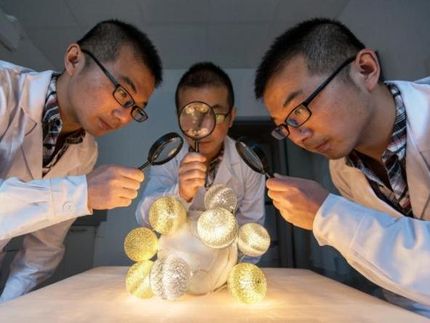Nanoscale spectroscopy with optical antennas
Optical antennas made of gold nanoparticles can enhance the sensitivity of photoluminescence and vibrational spectroscopy, according to research published in Chemical Science.
In traditional microscopy and spectroscopy, components such as lenses, mirrors and diffractive elements are used to control and focus the optical radiation. This relies on the wave nature of the radiation and means the smallest volume to which the radiation can be localised, and so the technique’s sensitivity, is limited by diffraction.
Now Lukas Novotny and colleagues at the University of Rochester, USA, have taken inspiration from radio wave manipulation and designed an optical antenna that can boost the interaction between light and the particle being studied. The fluorescence of a single molecule can be enhanced by more than a factor of 10 using this technique. The optical antenna, which consists of a single colloidal gold nanoparticle on the end of a pointed dielectric fibre, replaces a conventional focusing lens or objective, so the incoming light can be focused to dimensions smaller than the diffraction limit.
As well as improving chemical and biological sensing, the technique holds promise for resolving open questions in surface enhanced Raman scattering and fluorescence, says Novotny.
Original publication: Palash Bharadwaj, Ryan Beams and Lukas Novotny, Chemical Science, 2010
Most read news
Organizations
Other news from the department science

Get the analytics and lab tech industry in your inbox
By submitting this form you agree that LUMITOS AG will send you the newsletter(s) selected above by email. Your data will not be passed on to third parties. Your data will be stored and processed in accordance with our data protection regulations. LUMITOS may contact you by email for the purpose of advertising or market and opinion surveys. You can revoke your consent at any time without giving reasons to LUMITOS AG, Ernst-Augustin-Str. 2, 12489 Berlin, Germany or by e-mail at revoke@lumitos.com with effect for the future. In addition, each email contains a link to unsubscribe from the corresponding newsletter.
More news from our other portals
See the theme worlds for related content
Topic World Spectroscopy
Investigation with spectroscopy gives us unique insights into the composition and structure of materials. From UV-Vis spectroscopy to infrared and Raman spectroscopy to fluorescence and atomic absorption spectroscopy, spectroscopy offers us a wide range of analytical techniques to precisely characterize substances. Immerse yourself in the fascinating world of spectroscopy!

Topic World Spectroscopy
Investigation with spectroscopy gives us unique insights into the composition and structure of materials. From UV-Vis spectroscopy to infrared and Raman spectroscopy to fluorescence and atomic absorption spectroscopy, spectroscopy offers us a wide range of analytical techniques to precisely characterize substances. Immerse yourself in the fascinating world of spectroscopy!
























































